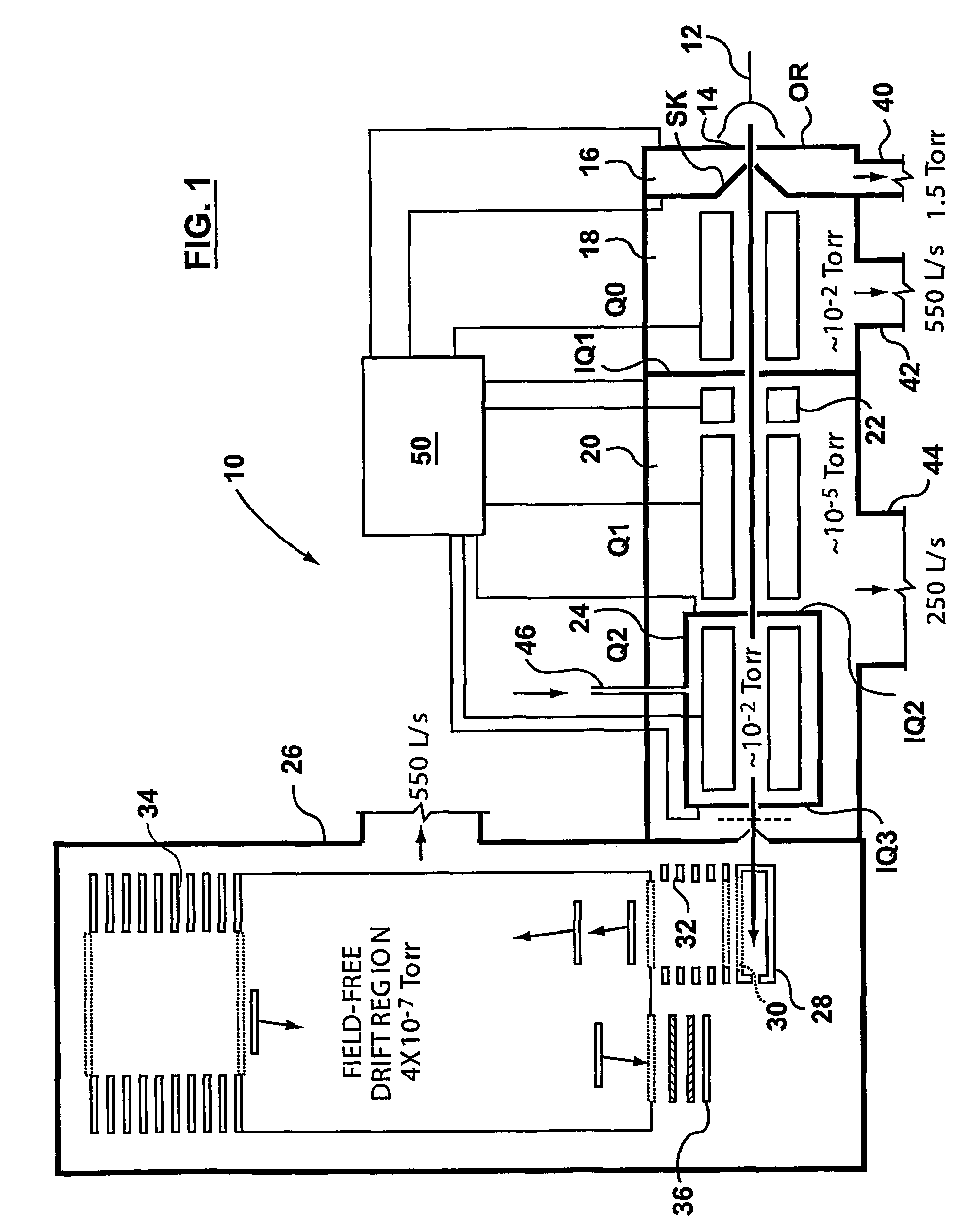Apparatus and method for MSnth in a tandem mass spectrometer system
a mass spectrometer and tandem technology, applied in mass spectrometers, stability-of-path spectrometers, separation processes, etc., can solve the problems of inability to unambiguously determine the individual concentration of each species, complex configurations and expensive, and are not commonly available. , to achieve the effect of improving the accuracy of data and simple unit mass resolution capability
- Summary
- Abstract
- Description
- Claims
- Application Information
AI Technical Summary
Benefits of technology
Problems solved by technology
Method used
Image
Examples
Embodiment Construction
[0056]FIG. 1 shows a schematic view of a conventional QqTOF tandem mass spectrometer, indicated generally at 10, (which has been described for example, by Chernushevich et al, Anal. Chem. 4, 7, 452A–461A, 1999). Ions are typically created in an ion source 12 by electrospray ionization or by atmospheric pressure ionization. The ions formed are sampled through a small orifice 14 into an intermediate pressure chamber 16, maintained at a pressure of about 1.5 Torr. The ions then pass into a first vacuum chamber 18, where they are captured by a first quadrupole rod set Q0, operated as an RF-only quadrupole, and the ions are then transmitted into a second vacuum chamber 20. The ions pass through a short quadrupole rod set or “stubbies”, indicated at 22, into a second quadrupole rod set Q1 in the vacuum chamber 20. From Q1 the ions pass into a collision cell 24, housing a third quadrupole rod set Q2 (also an RF-only quadrupole) at low energy (in order to avoid fragmentation). The ions then...
PUM
 Login to View More
Login to View More Abstract
Description
Claims
Application Information
 Login to View More
Login to View More - R&D
- Intellectual Property
- Life Sciences
- Materials
- Tech Scout
- Unparalleled Data Quality
- Higher Quality Content
- 60% Fewer Hallucinations
Browse by: Latest US Patents, China's latest patents, Technical Efficacy Thesaurus, Application Domain, Technology Topic, Popular Technical Reports.
© 2025 PatSnap. All rights reserved.Legal|Privacy policy|Modern Slavery Act Transparency Statement|Sitemap|About US| Contact US: help@patsnap.com



